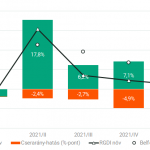NBER Working Paper No. 22114
Issued in March 2016
NBER Program(s): IO ITI
Manufacturing in high-income countries is on the decline and Denmark is no exception. Manufacturing employment and the number of firms have been shrinking as a share of the total and in absolute levels. This paper uses a rich linked employer-employee dataset to examine this decline from 1994 to 2007. We propose a different approach to analyze deindustrialization and generate a series of novel stylized facts about the evolution. While most of the decline can be attributed to firm exit and reduced employment at surviving manufacturers, we document that a non-negligible portion is due to firms switching industries, from manufacturing to services. We focus on this last group of firms before, during, and after their sector switch. Overall this is a group of small, highly productive, import intensive firms that grow rapidly in terms of value-added and sales after they switch. By 2007, employment at these former manufacturers equals 8.7 percent of manufacturing employment, accounting for half the decline in manufacturing employment. We focus on the composition of the workforce as firms make their transition. In addition, we identify two types of switchers: one group resembles traditional wholesalers and another group that retains and expands their R&D and technical capabilities. Our findings emphasize that the focus on employment at manufacturing firms overstates the loss in manufacturing-related capabilities that are actually retained in many firms that switch industries. >>>The full text is available here.
Nem található esemény a közeljövőben.
A KRTK Közgazdaság-tudományi Intézet teljesítményéről A KRTK KTI a RePEc/IDEAS rangsorában, amely a világ közgazdaság-tudományi tanszékeit és intézeteit rangsorolja publikációs teljesítményük alapján, a legjobb ... Read More »

Tisztelt Kollégák! Tudományos kutatóként, intézeti vezetőként egész életünkben a kutatói szabadság és felelősség elve vezetett bennünket. Meggyőződésünk, hogy a tudomány csak akkor érhet el ... Read More »

Srí Lanka: a 2022-es gazdasági válság leckéje – A. Krueger Lessons from Sri Lanka Anne O. Krueger Jul 25, 2022 – Project Syndicate ... Read More »

A permanens válság korában élünk – J. Meadway We’re living in an age of permanent crisis – let’s stop planning for a ‘return ... Read More »

A 2021 végén, illetve 2022 elején tapaszalt 6, illetve 7%-os cserearányromlás brutális reáljövedelem-kivonást jelentett a magyar gazdaságból. A külső egyensúly alakulásával foglalkozó elemzések többnyire ... Read More »
